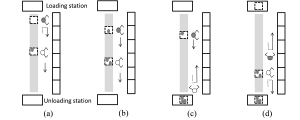Chia-Yen Lee (2012 graduate of the lab) published the fifth paper from his dissertation. In a previous paper, Lee and Johnson (2014), we define effectiveness as a way to distinguish between production performance and sales performance. In this paper we extend the concept to a panel data setting and analyze how efficiency and effectiveness evolve.
Abstract
Sales fluctuations lead to variations in the output levels affecting technical efficiency measures of operations when units sold are used at an output measure. The present study uses the concept of “effective production” and “effectiveness” to account for the effect of sales on operational performance measurements in a production system. The effectiveness measure complements the efficiency measure which does not account for the sales effect. The Malmquist productivity index is used to measure the sales effects characterized as the difference between the production function associated with efficiency and the sales-truncated production function associated with effectiveness. The proposed profit effectiveness is distinct from profit efficiency in that it accounts for sales. An empirical study of US airlines demonstrates the proposed method which describes the strategic position of a firm and a productivity-change analysis. These results demonstrate the concept of effectiveness and quantifies the effect of using sales as output.










